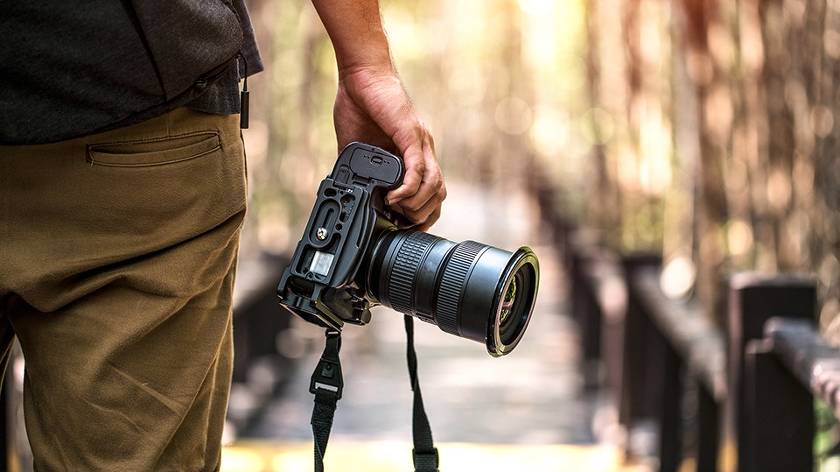We will try to deal with the main characteristics of this type of equipment so that you do not overpay for unnecessary options. As you already understood, this guide is intended for novice users! Additionally, we recommend that you familiarize yourself with our rated cameras, but first consider the main characteristics of gadgets.
Types of Cameras
Currently, there are two types of cameras: SLR and digital. Consider the pros and cons of different models:
- Reflex camera - the light passes through the lens system, is reflected by a translucent mirror and through the pentaprism hits the screen. Focus sensors help to sharpen the desired subject. Principle of work: when we press the button, the mirror rises and the light enters the matrix. That is, this very click that can be heard when the button is pressed is the movement of the mirror. If you plan to choose a SLR camera, keep in mind that such models are significantly more expensive. Moreover, to use the full potential of such devices, you need to have certain knowledge and experience. Otherwise, you can restrict yourself to a mirrorless analogue.
- Digital camera - The light immediately passes through the lens system and hits the matrix. Accordingly, there is no mirror, pentaprism, phase focus sensors. For obvious reasons, such products break less often, because there are no moving parts. In addition, they are silent and cheaper.
Which camera to choose: SLR or digital?
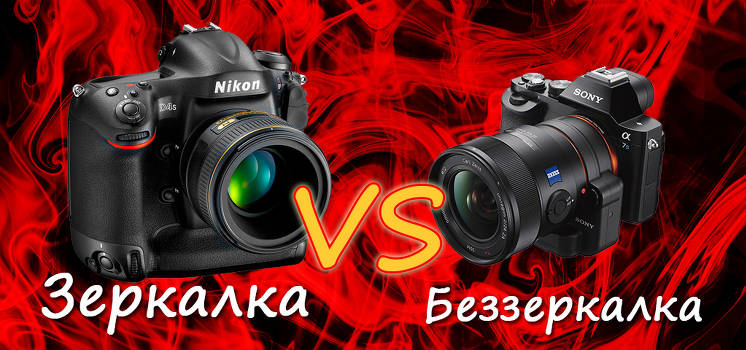
A lot has been said and written about their advantages and disadvantages. Of course, the first option provides more opportunities for creating a high-quality image, but this requires experience. The main advantage is that the user can independently adjust the sharpness of the picture, without relying on the LCD. As for the choice of the camera by novice photographers, here we will not give recommendations. You must decide on your own, based on your interests and the following facts:
- in almost all SLR models, focusing speed is higher with the exception of a few Sony mirrorless cameras;
- in SLR cameras there is a viewfinder that allows you to see the image without delay;
- digital counterparts are more compact in size.
Camera Matrix Selection
As for the objective assessment, the quality of the pictures depends not so much on the type of camera as on the ability to use it and the matrix. This is the most important part of any camera that receives light and, after processing by the processor, is recorded on the memory card as a photograph. The matrix is characterized by the number of megapixels and size.
In the past, when cameras worked on film, a frame standard of 35 millimeters was popular.When switching to the matrix, at first, the developers tried to match the specified characteristic, and released full-frame full-frame matrices. However, due to the likelihood of marriage, the production of such products did not pay off. Therefore, many began to make cropped analogues, the so-called crop matrices. In this case, the value of the crop factor indicates how much the frame is cropped relative to the full frame.
When choosing a digital camera or a mirror analogue, it is important to consider that the larger the matrix, the more than 1 pixel can catch the rays of light. Accordingly, the smaller the pixel size, the more darkened and worse the photo will be, even in the presence of artificial lighting.
Number of camera megapixels

As for the quantity, the optimal choice for the camera is 16-18 megapixels so that you can trim the excess, although 9 megapixels is enough. Unfortunately, this is why beginners most often evaluate the quality of the camera for the parameter. Let's try to figure out how many megapixels you need for the camera in practice. Currently, the most common monitor format is Full HD - 1920 (in width) by 1080 (in height) pixels. Multiplying these numbers we get a little more than 2 megapixels. If we are talking about the “future format” 4K, then it needs 8,000,000 pixels, that is, 8 megapixels. For printing on A4 sheet, the recommended density is 300 dpi, which is 300 pixels per inch. Given that the height of such a sheet is 11.75 inches, and the width is 8.75 inches, it turns out that 9 megapixels is enough for us. For social networks, due to the very strong compression of the photo, 1 megapixel is generally enough. It follows that chasing a large number of megapixels makes no sense, more importantly the pixel size.
Camera Lens Selection
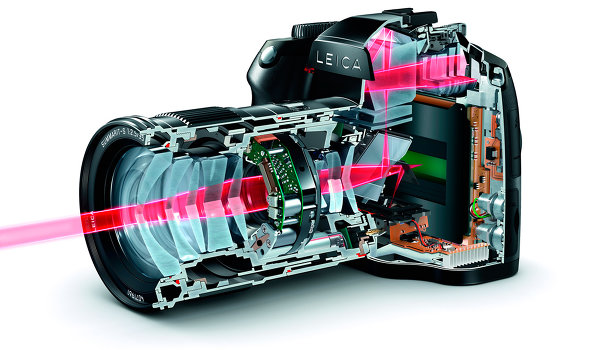
One of the main parameters is the focal length. If you do not know how to choose a lens for the camera, you need to consider that this part is a lens system. Light passing through them is refracted and reduced in one place. The distance from the lens to the focus point is called the focal length. In practice, the larger it is, the more approximate the object appears. The smaller, the larger the viewing angle and more space is placed in the frame. For obvious reasons, small lenses with a small focal length are used to shoot architecture, a variety of landscapes, crowds. Long-focus cameras are relevant for creating photographs from a long distance, for example, on birds or wild animals. When choosing a camera, novice users need to consider that there are two types of lenses:
- Fixed focal length - The best option for novice users, because such models are easier to operate;
- Zoom lens - for more advanced users.
As a rule, in most cases 3-5 focal lengths are enough to shoot different objects or one lens with a large range, which is much more expensive.
Aperture and aperture
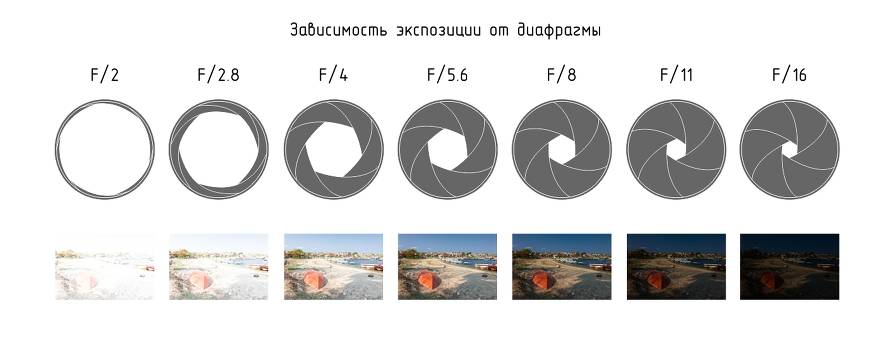
The second characteristic in importance in choosing a camera lens is the diaphragm. This is a mechanism that can be compared with the pupil of a person. When we are in a dark room, the pupil is open, and when we look at the sun, it narrows to let in less rays. So with the help of the diaphragm, you can control the brightness of the photo. This characteristic is indicated by the Latin letter f. Shows the ratio of focal length to opening diameter. The minimum value that can be set is called the aperture. Accordingly, models with f.2 aperture are worse than f.14. It is worth adding that this parameter is responsible for adjusting the sharpness. For example, if we open the aperture to the maximum, we get a beautiful background.
Optimal shutter speed
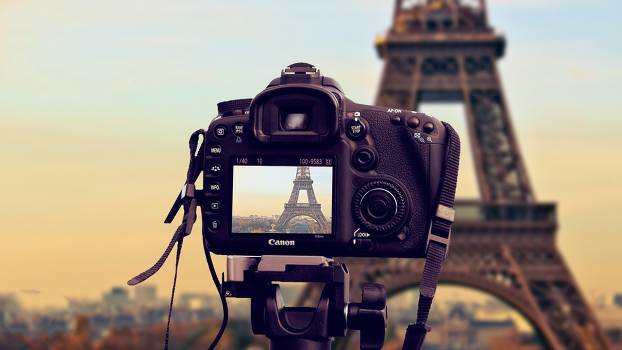
This parameter is also responsible for the illumination of the scene. Do not chase the maximum values, since even in modern budget models, indicators will be enough.It is more important to decide on the tasks.
Excerpt - the time during which the light exposes the photosensitive portion of the matrix. Each camera has a shutter, when pressed, the curtain opens for a split second and the light penetrates inside. The shorter the shutter closing time, the clearer the photo. Long shutter speeds blur objects, resulting in lighter photos. If you want to choose the right camera, you need to decide for what purpose you will use it. When shooting sports, photographers use a very short shutter speed. Such models provide the effect of stopping time. A slow shutter speed is used to take landscapes. With their help, you can shoot waterfalls, clouds. When operating such models, it is important to create conditions for the stillness of the camera. Therefore, professionals often use a tripod.
ISO sensitivity
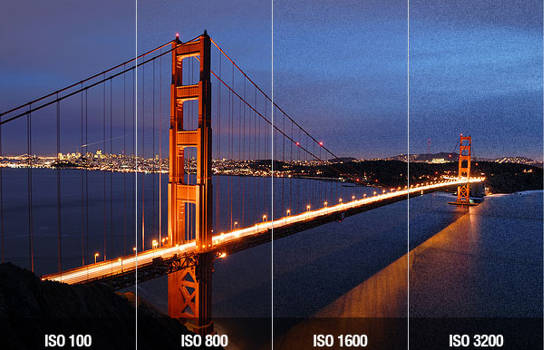
When choosing a quality camera, you should pay attention to the sensitivity of the camera to light. This parameter is indicated by ISO.
Matrix sensitivity - artificial signal gain, measured in units of ISO. Modern cameras can be equipped with a noise reduction function, which is why sales consultants convince them not to worry about indicators that are too high. But, in practice, high ISO performance is difficult to suppress. However, do not chase too low values. In most cases, this speaks of the marketing ploy of the manufacturer. As already mentioned, modern models have normal shutter speed and sensitivity. The main thing is to use the device correctly, and select the frame.
Tips for choosing a camera for beginners

What else do you need to pay attention to when choosing a camera for a beginner? First, do not bother with bracketing options, metering type, panoramas, GPS. According to experts, any camera from $ 400 has the necessary set of functions to get good photos. It is better to pay attention to the following options:
- stabilizer - A useful feature that allows novice photographers to take clearer pictures when you hold the device in trembling hands. The part can be installed in the camera or lens. Accommodation is not a priority;
- viewfinder - A huge plus for the camera, both for beginners and professional photographers. This is an additional point of support that occurs when the gadget is bowed to the face. Therefore, you will not be afraid of the sun's rays, because of which the scene is not visible on the screen.
- swivel screen - Adds convenience to the operation of the camera. For example, if you want to take a picture of an object located low, and do not want to lie down on the ground.
Useful features
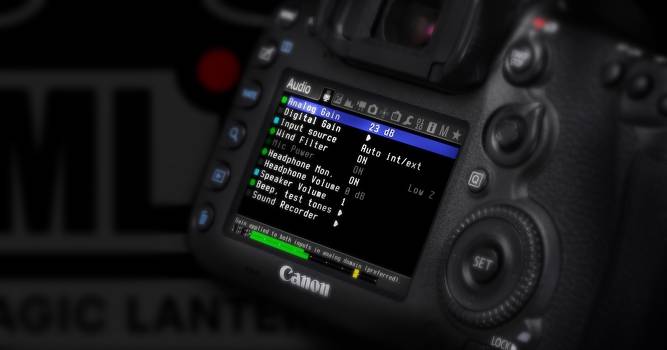
As for the functionality, when choosing a good camera you may find it useful:
- Touchscreen - especially useful when shooting video. Allows you to smoothly set parameters, not a shaky device without unnecessary click sounds;
- Wi-FI - currently used in more expensive SLR cameras. With it, you can take pictures of yourself, transfer photos or upload to the cloud storage.
Thus, it is important to focus on large matrices with a quantity of 9 megapixels. The interchangeable lens is better. Its most important parameters are aperture and aperture. The quality of the photo does not depend on the type of camera. It all depends on your skills. Good luck.


